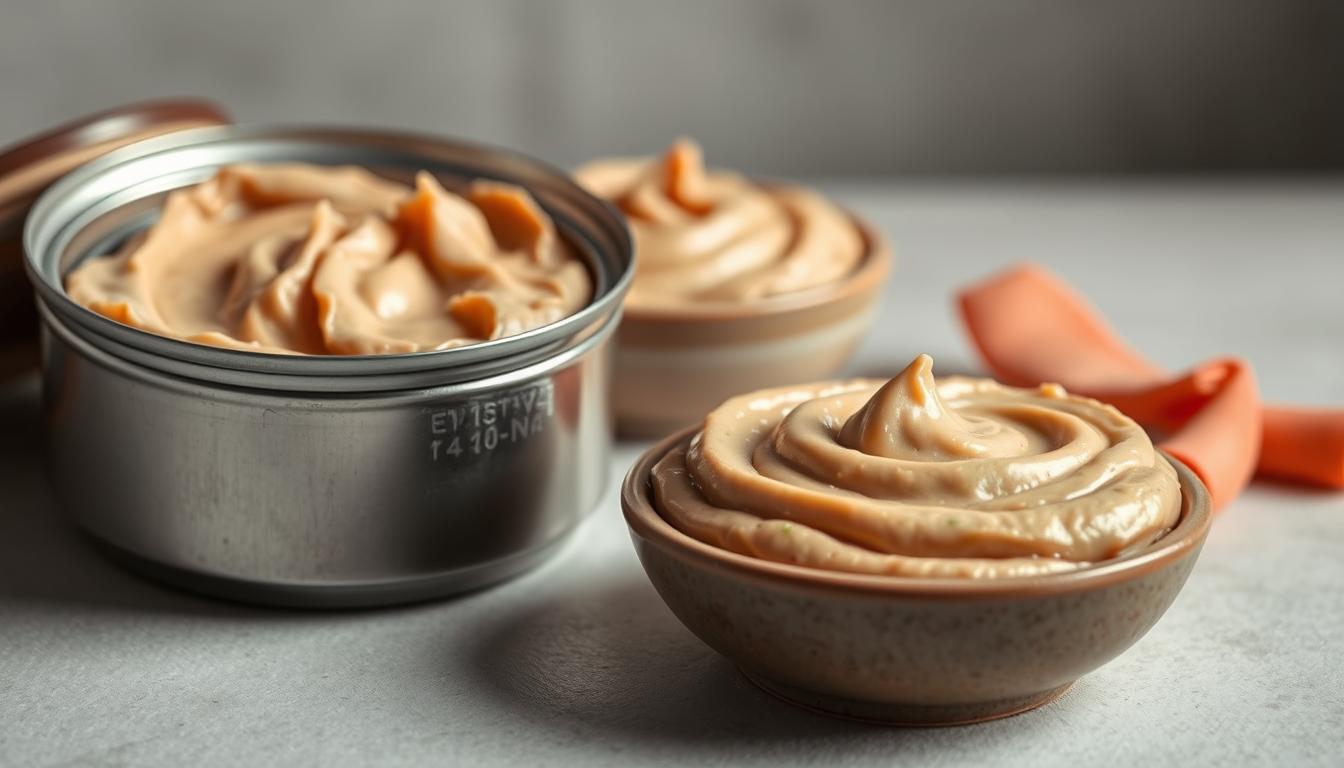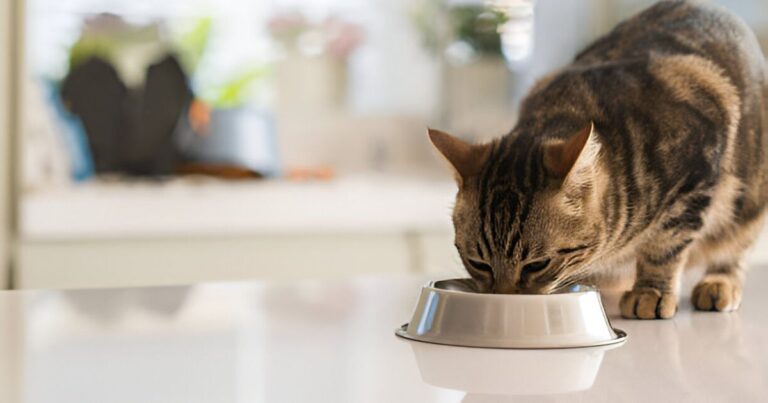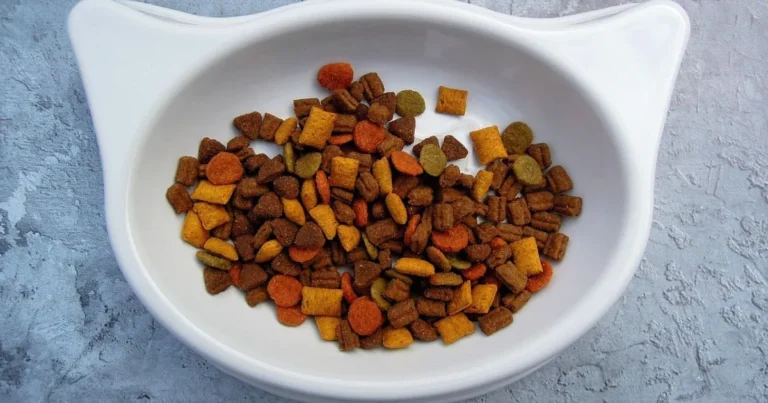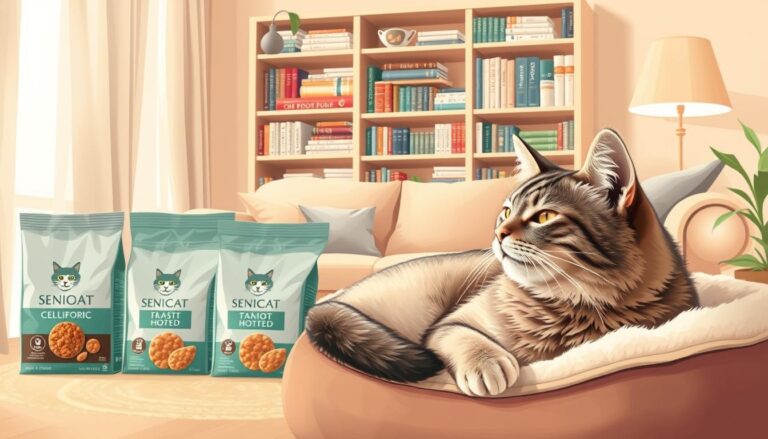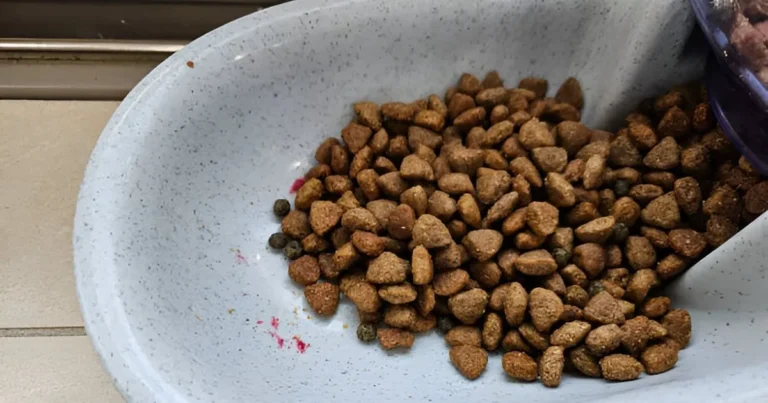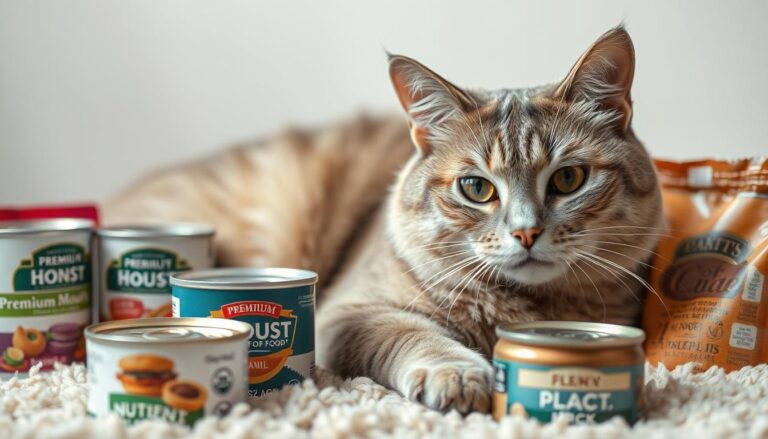Soft Cat Food: Gentle Nutrition for Your Furry Friend
Every cat parent knows that moment when your feline friend looks up with those irresistible eyes, silently asking for the perfect meal. Soft cat food isn’t just a meal—it’s a comfort. It’s a nutrition powerhouse designed to keep your whiskered companion healthy and satisfied.
Choosing the best soft cat food can transform your pet’s eating experience. Unlike dry kibble, soft cat food provides a moisture-rich diet. This diet mimics the natural eating habits of cats in the wild. It supports their digestive health, hydration, and overall nutritional needs.
Modern pet nutrition has revolutionized how we feed our cats. Soft cat food options now offer tailored nutrition for every life stage. From playful kittens to distinguished senior cats, these meals deliver essential proteins, vitamins, and minerals your cat craves.
Table of Contents
Understanding Soft Cat Food and Its Benefits
Keeping your cat healthy means giving them the best food. Soft cat food is a great choice because it tastes good and is good for them. It’s especially popular among cat owners who want the best for their pets.
Cats need special food, and soft cat food is perfect for many. It’s soft and easy to eat, which is great for their health and happiness.
Texture and Digestibility Advantages
Soft cat food is easy to digest. Its soft texture is great for cats with:
- Dental issues
- Sensitive stomachs
- Older cats with reduced chewing ability
Nutritional Value Overview
Choosing the right soft cat food is key. Look for high-quality options that offer a balanced diet. This diet should match what cats naturally eat.
| Nutritional Component | Benefit |
|---|---|
| High-Quality Protein | Supports muscle development |
| Essential Fatty Acids | Promotes healthy skin and coat |
| Vitamins and Minerals | Supports overall immune system |
Hydration Benefits for Cats
Soft cat food is also very moist. Cats naturally have a low thirst drive. This makes it hard for them to stay hydrated. But, premium soft cat food helps by adding extra liquid, keeping their urinary tract healthy and hydrated.
Choosing the right soft cat food means your cat gets a meal that’s full of nutrients. It’s easy to digest and supports their health and happiness.
How to Choose the Best Soft Cat Food for Your Pet
Finding the right soft cat food is key for your cat’s health and happiness. When looking for the best soft cat food, several important factors will help you make the right choice. These factors ensure your cat gets the nutrition they need.
Start by checking the ingredient list closely. Good soft cat food should have:
- Real meat as the main protein source
- Only a few artificial preservatives
- Nutrients that match your cat’s life stage
- A nutritional profile that’s right for their age
Reading reviews of soft cat food can give you useful tips. Look for advice from vets and other cat owners. Choose brands that are open about their ingredients and provide detailed nutrition info.
Think about what your cat needs in terms of health. Some cats might need special soft cat food because of:
- Weight issues
- Delicate digestion
- Needs for senior cats
- Health problems
Pro tip: Always talk to your vet before changing your cat’s diet. They can help pick the best soft cat food for your pet’s special needs.
Nutrition is the foundation of your cat’s long-term health and well-being.
Premium Soft Cat Food Brands and Their Features
Finding the best soft cat food can be tough for pet owners. There are many premium options that meet different needs and tastes of cats.
For those looking for top-notch nutrition, there are many great brands. Each brand has its own special features that make it stand out in the pet food world.
Top-Rated Brand Comparison
- Royal Canin Soft Texture: Known for precise nutritional balance
- Hill’s Science Diet: Focuses on age-specific formulations
- Purina Pro Plan: Offers specialized soft food for sensitive cats
- Wellness CORE: Emphasizes grain-free natural ingredients
Price-to-Quality Analysis
| Brand | Average Price | Nutritional Rating |
|---|---|---|
| Royal Canin | $18-$25 per case | 4.5/5 |
| Hill’s Science Diet | $15-$22 per case | 4.3/5 |
| Purina Pro Plan | $16-$23 per case | 4.4/5 |
Customer Reviews and Ratings
Customer opinions are key when looking at soft cat food. People love brands that offer:
- High-quality protein sources
- Consistent texture
- Digestibility
- Palatability for cats
“Finding the right premium soft cat food makes a significant difference in my cat’s health and happiness.” – Veterinary Nutritionist
Choosing premium soft cat food means your cat gets the best nutrition. It’s tailored to their specific needs.
Grain-Free vs. Regular Soft Cat Food Options
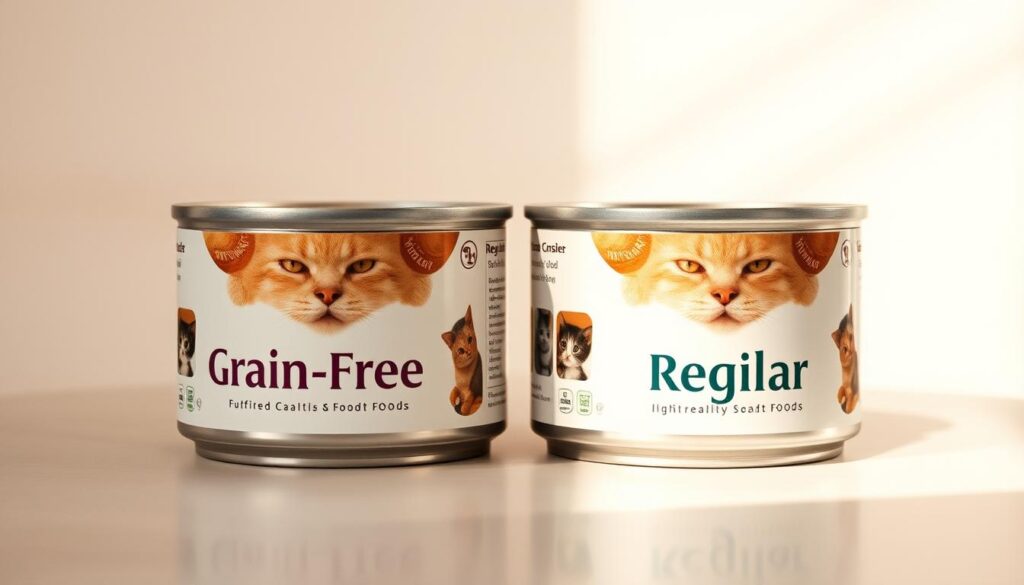
Choosing between grain-free and regular soft cat food is a big decision for pet owners. Knowing the differences helps pick the best food for your cat.
Grain-free soft cat food is very popular now. It doesn’t have wheat, corn, or rice. Instead, it has lots of protein. Cats are meant to eat more protein than grains.
- Ideal for cats with specific grain allergies
- Higher protein content
- Potentially easier digestibility
- Closer to a cat’s natural dietary needs
Regular soft cat food has grains for carbs and fiber. Some cats do well with grains, but others might not.
| Feature | Grain-Free Soft Cat Food | Regular Soft Cat Food |
|---|---|---|
| Protein Source | Meat-based primary ingredients | Mixed protein and grain sources |
| Carbohydrate Content | Lower carbohydrate percentage | Higher carbohydrate percentage |
| Cost | Generally more expensive | More budget-friendly |
Talking to your vet is key to decide if grain-free is right for your cat. Some cats do better with grain-free, while others like regular food.
Always consult with a professional to determine the most suitable diet for your cat’s unique nutritional requirements.
Age-Specific Soft Cat Food Formulations
Choosing the right soft cat food is key for your cat’s health. Different ages need different nutrients for the best health. Premium soft cat food brands offer special formulas for kittens, adult cats, and seniors.
Nutrition is vital for your cat’s well-being. The best soft cat food provides special nutrients for each life stage.
Kitten-Specific Formulas
Kittens need high-energy, nutrient-rich food for fast growth. These formulas include:
- Higher protein content
- Essential fatty acids for brain development
- Extra calcium for bone growth
- Smaller kibble sizes for easy consumption
Adult Cat Nutrition
Adult cats need balanced food to keep their weight and muscles strong. Premium soft cat food for adults focuses on:
- Balanced protein sources
- Moderate calorie content
- Essential vitamins and minerals
- Optimal weight management ingredients
Senior Cat Dietary Needs
Older cats need special food for their aging bodies. Soft cat food for seniors includes:
- Lower calorie content
- Enhanced joint support supplements
- Easier-to-digest proteins
- Increased moisture content
| Life Stage | Key Nutritional Focus | Recommended Soft Food Characteristics |
|---|---|---|
| Kitten | Growth and Development | High protein, small kibble, extra nutrients |
| Adult | Maintenance and Health | Balanced nutrition, weight control |
| Senior | Age-Related Support | Lower calories, joint support, easy digestion |
Knowing your cat’s nutritional needs at each stage is crucial. Talk to your vet to find the best soft cat food. This will help keep your cat healthy and happy.
Common Ingredients in Quality Soft Cat Food
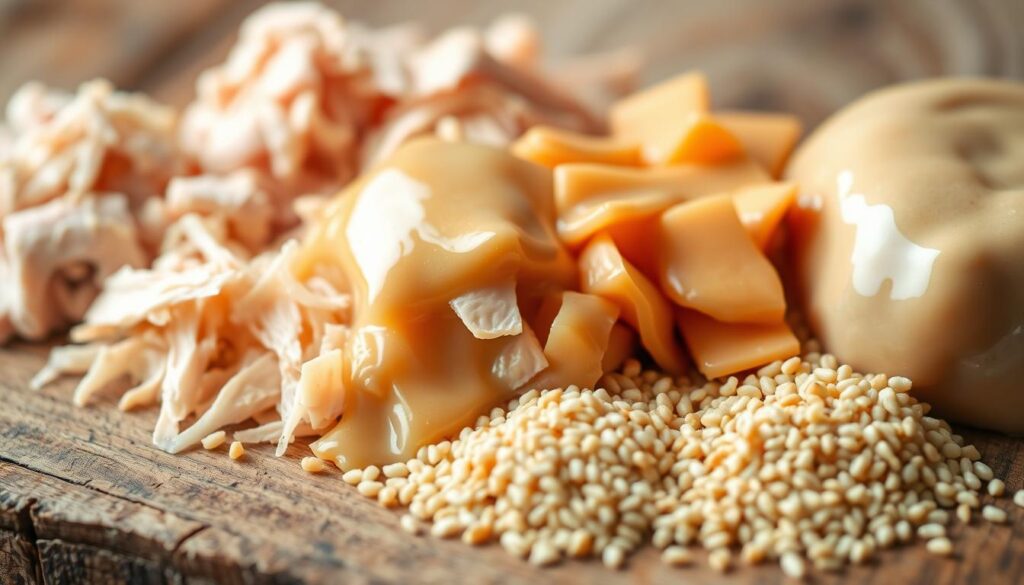
Choosing the right soft cat food is key for your cat’s health. Premium soft cat food offers more than just food. It has a mix of nutrients that help your cat stay healthy.
High-quality soft cat food starts with protein. Cats need animal-based proteins to stay healthy. Look for:
- Chicken
- Turkey
- Fish (salmon, tuna)
- Beef
Protein should be the first ingredient. It gives cats the amino acids they need for muscles, immune health, and energy.
Good soft cat food also has important nutrients like:
- Taurine: An amino acid for heart and eye health
- Omega-3 and Omega-6 fatty acids for coat and skin health
- Vitamins A, D, and E for metabolism
Some brands add extra good stuff like prebiotics, probiotics, and antioxidants. These help with digestion and boost the immune system.
Pro tip: Always read ingredient labels carefully and avoid products with excessive fillers or artificial preservatives.
When picking soft cat food, choose brands with good ingredients. Look for complete nutrition that fits your cat’s age and health needs.
Organic and Natural Soft Cat Food Alternatives
Pet owners are looking for better food options for their cats. Organic soft cat food is a top choice for those wanting the best for their pets.
When you buy soft cat food, knowing about organic and natural labels is key. Organic soft cat food has many benefits that make it stand out from regular pet food.
Organic Certification Standards
The USDA has strict rules for organic cat food. To be called organic, cat food must meet certain criteria:
- Ingredients must be grown without synthetic pesticides
- No artificial preservatives or chemical additives
- Animals used for meat sources must be raised without antibiotics or growth hormones
- Minimum 95% organic ingredients to qualify for organic certification
“Organic pet food represents a commitment to pure, wholesome nutrition for your cat.” – Veterinary Nutrition Expert
Natural Ingredient Benefits
Choosing organic soft cat food has many nutritional benefits:
- Enhanced digestibility for sensitive feline systems
- Higher concentration of essential nutrients
- Reduced exposure to potential harmful chemicals
- Support for overall feline health and wellness
Buying organic soft cat food means investing in your cat’s health. Look for brands with clear ingredient lists and third-party organic certifications.
Storage and Serving Guidelines for Soft Cat Food
Keeping your cat’s food fresh and healthy is important. When you buy soft cat food, knowing how to handle it right is key. This ensures your cat gets the best nutrition.
Keeping soft cat food in the fridge is essential. After opening, store it in an airtight container in the fridge. Here are some important storage tips:
- Refrigerate opened soft cat food within 1 hour of serving
- Store in sealed containers to prevent contamination
- Use refrigerated soft cat food within 3-5 days
- Check expiration dates before purchase
How you serve soft cat food is also important. Cats like their food at room temperature. This makes it smell better and taste more appealing. Here’s a quick guide on serving:
| Food Type | Recommended Serving Temperature | Storage Duration |
|---|---|---|
| Unopened Wet Food | Room temperature | Until expiration date |
| Opened Wet Food | Refrigerated, warmed slightly | 3-5 days |
It’s important to control how much food you serve. Use measuring tools to make sure you’re giving the right amount. This depends on your cat’s age, weight, and how active they are. Don’t leave food out for too long to avoid bacteria.
When buying soft cat food, think about getting smaller amounts. This helps keep it fresh. Always check the packaging for any damage before you buy.
Transitioning Your Cat to Soft Food Diet
Switching your cat to soft food needs patience and a smart plan. Vets say to start slow to avoid upset stomachs. This lets your cat’s body get used to the new food’s texture and nutrients.
Start by adding a bit of soft food to their usual meal. Mix in 25% soft food and 75% of what they’re used to. Gradually increase the soft food over 7-10 days. Keep an eye on how your cat eats and feels.
Monitoring Your Cat’s Response
Look for signs your cat likes the new food or if they don’t. Check their energy, coat, and health. If they seem off or don’t want to eat, slow down the change. Most cats do well with good soft food, making it easier to pick the right one.
Professional Guidance
Talk to your vet before big diet changes. They can give advice based on your cat’s age, health, and needs. Some cats need special soft foods, so a vet’s help ensures a safe and easy switch.

